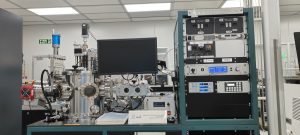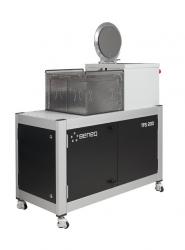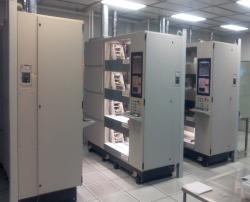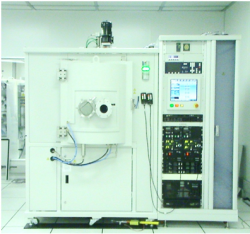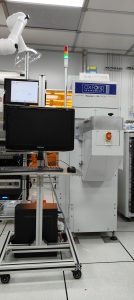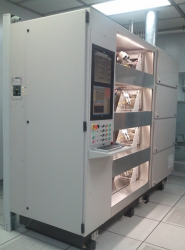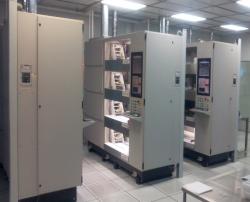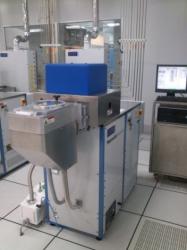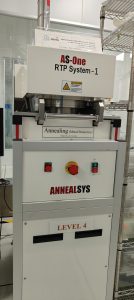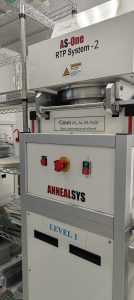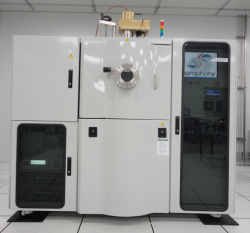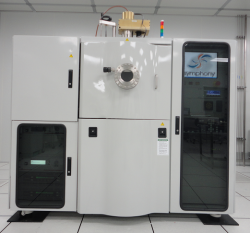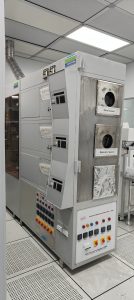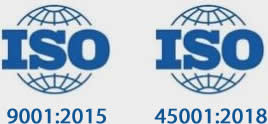• E-Beam evaporation is sourced from Tecport.
• There are two electron guns and an Ion gun.
• EB guns has two hearths. Hearth associated with EB gun-1 has four 25 cc pockets and the one associated with EB gun-2 has six 15 cc pockets.
• One 4 pocket hearth and one 6 pocket hearth.
• Pop-Top source
• Max Power 10kW
• Accelerating Voltage 4-8 kV
• Beam deflection 270deg
• Emission Current 0-1.5A
• Programmable sweep controller.
• Temescal Crucible indexer.
• Substrate holder {6, 4, 3, 2 inch diameter}.
• Planetary rotation with four holders.
• Inficon IC6 deposition controller.
• Ultimate Pressure ~2E-7 Torr.
• Process Control using Symphony software.
• Deposition rates from 1 Å/s to 199 Å/s.
• Ion-assisted deposition is also possible.


